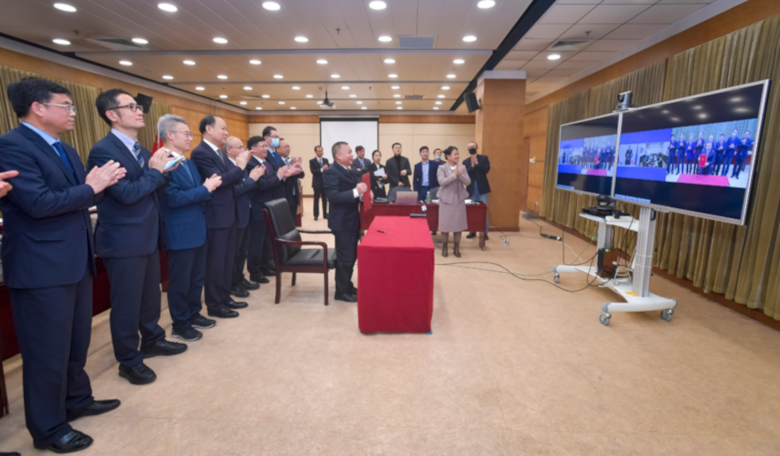China and Russia have signed a Memorandum of Understanding (MoU) to cooperate on the construction of an international lunar research station, said officials at both space agencies in separate statements Tuesday.
Signed during a virtual meeting attended by the head of Roscosmos Dmitry Rogozin and the head of the KNKA Mr. Zhang Kejian, the Russian space agency said the agreement with China's National Space Administration (CNSA) is to develop a "complex of experimental research facilities created on the surface and/or in the orbit of the Moon, designed to carry out multidisciplinary and multipurpose research work”.
Activities conducted at the International Lunar Research Station (ILRS) would also include exploration and utilisation, lunar-based observation, basic scientific experiment and technical verification, and long-term autonomous operation.
Roscosmos said the two nations will utilise their experience in the field of space science to jointly develop a roadmap for the creation of the ILRS, as well as conduct close interaction in planning, justification, design, development, implementation and operation of the project.
Though no timelines or further details were mentioned, both the CNSA and Roscosmos iterated that the ILRS would be "open to all interested countries and international partners”.
This latest MoU builds on earlier agreements signed by the two nations to further their space ambitions, including cooperative work on the implementation of the CNSA’s "Chang'e 7" lunar polar exploration mission and Roscosmos’ Luna-26 orbiter spacecraft.
The two space agencies also committed to previously announced plans to create a joint lunar and deep space data centre, which will consist of hubs in each respective country.
Russia has a long history in space travel; this year the nation will celebrate the 60th anniversary of its first-ever manned space flight in April 1961 by Yuri Gagarin.
This feat was followed two years later when Valentina Tereshkova became the first and youngest woman to have flown in space on a solo mission in June 1963.
However, after years of poor financing and endemic corruption, Russia has fallen behind competing nations such as the US and China in advancing their space programme.
Despite preparing to launch its Luna 25 and Luna 27 lunar lander missions before the end of the 2020s, Russia is feeling the strain of diminishing rocket contracts after Roscosmos lost its monopoly for crewed flights to the International Space Station (ISS) last year.
After nearly a decade of relying on Soyuz seats to get its astronauts into space, the US space agency is now able to transport its crew via SpaceX’s Crew Dragon, which it formally certified for commercial human spaceflight in November 2020.
NASA has signed up for six crewed missions with SpaceX as part of the agency's Commercial Crew Programme; a move that NASA foresees as a way to reduce the cost of going to space.
The US is also busy with Artemis and has recently deployed its fifth robotic rover, Perseverance, on the surface of Mars,.
China meanwhile has similar martian ambitions with its Tianwen-1 probe currently in orbit around the Red Planet and plans are currently underway for the construction of its own space station.
Reports suggest that the station’s core module will be lofted into space in the coming months and that Chinese astronauts are currently receiving intensive training for spaceflights tasked with assembling the off-world structure.











